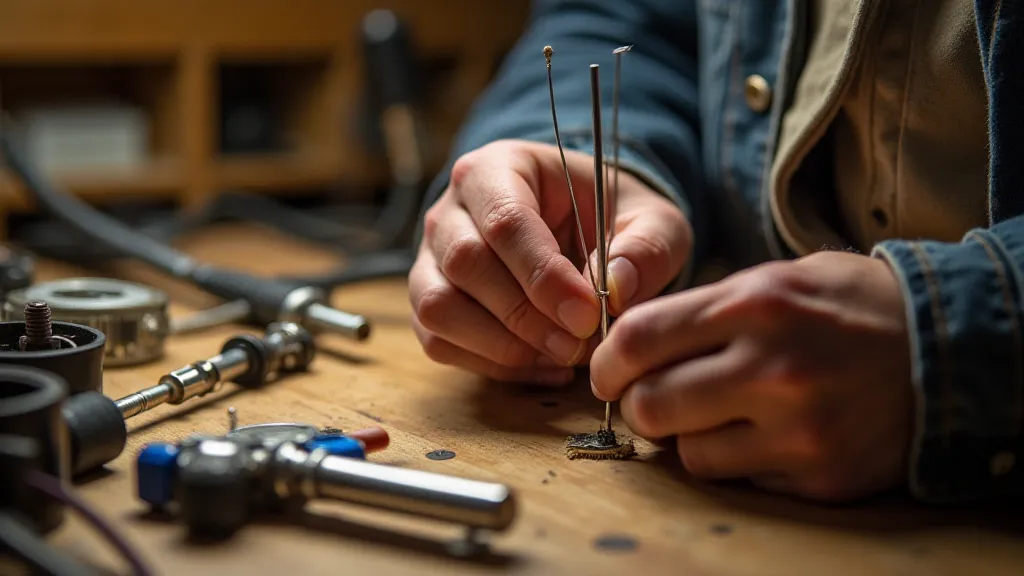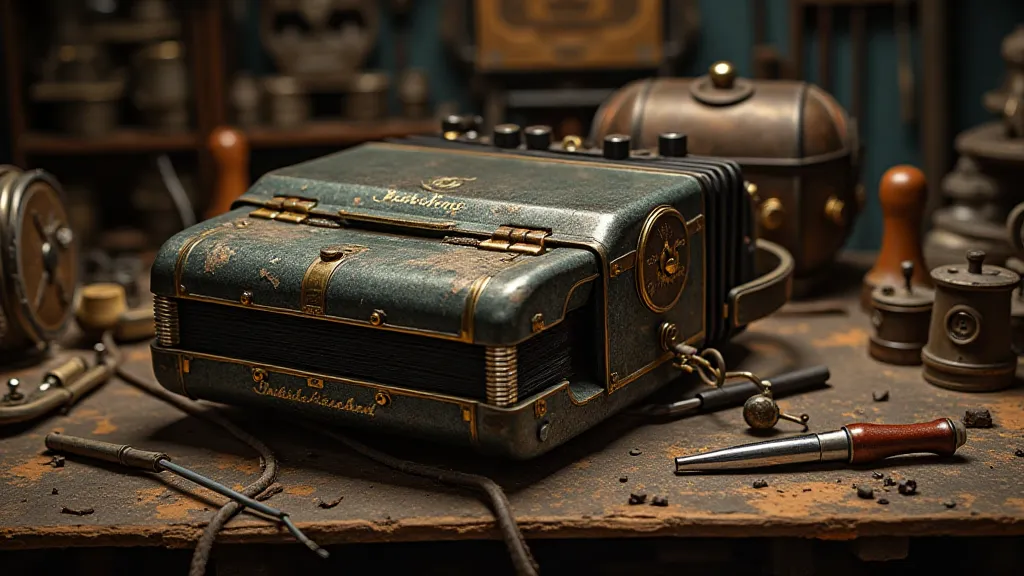Beyond the Horizon: Portable Antennas for Field Operations
There’s a certain magic to field operations, isn’t there? The quiet hum of electronics mingling with the rustling leaves, the thrill of connecting with distant voices when civilization feels miles away. It’s a feeling that evokes something deep within us – a longing for connection, a respect for ingenuity, and a touch of romanticism. It’s a feeling, I confess, that’s not dissimilar to the joy I find in restoring antique accordions. Each bellows, each key, each hand-carved detail speaks of a craftsman's dedication, a bygone era, and the simple elegance of functionality. Just as a well-restored accordion brings music back to life, a cleverly designed portable antenna can bridge the gap between you and the rest of the world, no matter how remote your location.
The limitations of portable operation are, naturally, the driving force behind design. You can't lug a Yagi-Uda array into the backcountry. Weight and size become paramount. Durability is essential – a sudden gust of wind or a careless jostle shouldn’t render your communication equipment useless. It's a challenge that demands creativity and a deep understanding of RF principles, but also offers immense satisfaction when overcome.

The Allure of Wire Antennas – Simplicity and Performance
When it comes to portable antennas, wire antennas are often the first choice, and for good reason. They’s incredibly versatile, inexpensive, and can be surprisingly efficient. Think of a simple dipole – two lengths of wire, each approximately a quarter-wavelength long, fed by a coaxial cable. It’s a classic for a reason. The beauty lies in its simplicity; the construction is straightforward, and the performance, when properly tuned, can be quite impressive.
Beyond the dipole, variations abound. The end-fed half-wave (EFHW) antenna is particularly appealing for its portability. It only requires a single length of wire, eliminating the need for a balun, although a matching network is essential. Similarly, the longwire antenna, while requiring more careful tuning, can offer broad bandwidth and surprisingly good performance with minimal materials. Understanding the underlying principles of how these antennas interact with the electromagnetic spectrum is key; it's a dance of wavelengths and impedance that, when mastered, opens up a whole new level of performance. It’s a subject often explored in greater depth, examining the unseen dance of RF principles.
The key to success with wire antennas, whether dipole or longwire, is a good tuning process. An antenna analyzer is invaluable, but even without one, a sharp ear and a basic understanding of signal strength can guide you. The feel of accomplishment after painstakingly tweaking a longwire to resonance is something special – comparable to the delicate work of re-gluing a cracked accordion reed.
Ground Plane Antennas: A Foundation for UHF/VHF
For VHF and UHF bands, ground plane antennas offer a compact and robust solution. A basic ground plane consists of a radiating element – typically a quarter-wavelength whip – supported by several radials extending downwards. These radials act as a counterpoise, mimicking the effect of a full ground. While not as efficient as a dipole at lower frequencies, their low profile and relative ease of construction make them ideal for portable use.
Variations on the ground plane theme include the Slim Jim and J-pole antennas. These designs offer increased gain and are relatively easy to construct from PVC pipe or other readily available materials. The folded Slim Jim, in particular, is a favorite among portable operators due to its compact size and decent performance. Their construction reminds me of the precise angles and measurements required to accurately reassemble an accordion’s intricate mechanical components.
Beam Antennas on the Go: A Challenge Worth Pursuing
The idea of a portable beam antenna might seem ludicrous at first glance. But with a little ingenuity, it’s surprisingly achievable. A "linked dipole" design – essentially two dipoles connected in a phased array – can be made relatively compact by folding the elements. While the gain won't rival a full-sized beam, it can offer a noticeable improvement over a dipole, especially when operating in challenging conditions. Achieving optimal performance often involves careful consideration of factors like phase alignment and impedance matching – subjects explored more thoroughly by those interested in transcendental radiation and the physics behind antenna design.
Alternatively, a simple two-element directional antenna – a dipole driven out of phase with a reflector – can provide modest gain without being overly cumbersome. The construction of such antennas requires careful attention to detail, and a good understanding of impedance matching, but the rewards – the ability to "hear" signals others can't – are well worth the effort. The satisfaction of creating something capable of focusing energy, like a finely tuned bellows system, is truly unparalleled.

Understanding the Principles: RF and Practical Considerations
Successful portable antenna design isn't just about following plans; it's about understanding the underlying principles. A grasp of RF concepts – wavelength, impedance, SWR, radiation patterns – is invaluable. Knowing why a particular design works, and how to troubleshoot problems when things go wrong, will transform you from a plan-follower into a true antenna engineer. Further, understanding how the balance between gain and signal quality – that delicate dance between power and noise – is crucial for success in challenging environments. Techniques for optimizing this balance are often discussed in detail, exploring the nuances of shadows and signals and antenna performance in difficult conditions.
Practical considerations also play a crucial role. Choose materials that are lightweight, durable, and readily available. PVC pipe, fiberglass, and even tent poles can be repurposed for antenna construction. Pay attention to the weather conditions you're likely to encounter – wind resistance, moisture, and temperature extremes can all impact antenna performance and longevity. The careful selection of these materials, along with their application, is vital to ensuring longevity and reliability, much like the choice of wood and metal in the construction of an antique accordion.
Restoration and Resilience: Lessons from Accordions
My fascination with antique accordions has taught me a great deal about resilience. These instruments have survived wars, floods, and countless years of neglect. Their ability to endure, and to still produce beautiful music, is a testament to the craftsmanship of their builders. Similarly, a well-designed portable antenna should be able to withstand the rigors of field operation. Careful construction, durable materials, and a little preventative maintenance can extend its lifespan and ensure its reliability. Just as a master craftsman carefully restores a damaged bellows, ensuring its airtight seal, we must consider the long-term performance of our antennas.
Sometimes, the most satisfying aspect of both accordion restoration and antenna building is the process of learning. Every broken reed, every faulty connection, presents a challenge to overcome, an opportunity to expand one's knowledge and skill. The feel of the metal, the subtle hum of a well-tuned reed, or the satisfying click of a correctly aligned connector – these tactile experiences ground us in the physicality of creation.

The principles of maintaining a balance between power and quality, often referred to as a "whisper" of energy, are also crucial. It’s a nuanced skill requiring a deep understanding of how signals interact with the environment, a concept often explored in greater depth when discussing the trade-offs involved in maximizing gain while minimizing distortion. Understanding these nuances can be challenging, requiring careful measurements and a keen ear for subtle variations. This careful balancing act, ensuring clarity and power, is crucial to the overall performance and longevity of both antique accordions and modern antennas. The challenge of achieving that perfect balance – the ability to transmit a clear and powerful signal while also minimizing distortion – is akin to the meticulous process of ensuring that every reed in an accordion produces a rich, resonant tone.
Portable antennas aren’t just about communication; they’re about connection – connection to the world, connection to the past, and connection to the ingenuity of the human spirit. They’re about extending our reach, defying limitations, and embracing the thrill of the unknown. And, perhaps most importantly, they’re about finding joy in the simple act of building something with our own hands.
Beyond the practical aspects of construction and performance, there’s a deeper philosophical resonance between the craft of antenna building and the restoration of antique instruments. Both pursuits demand a reverence for the past, a commitment to precision, and a willingness to embrace challenges as opportunities for growth. The feeling of accomplishment that comes from successfully restoring a broken accordion or constructing a high-performing portable antenna is a testament to the enduring power of human creativity and the timeless appeal of hands-on craftsmanship.
The journey of learning about antennas, much like the journey of mastering an instrument, is a continuous process of refinement and discovery. Every project presents new challenges, new techniques to learn, and new levels of understanding to achieve. And with each accomplishment, we deepen our appreciation for the beauty and elegance of the underlying principles that govern both the physical world and the art of creation.





